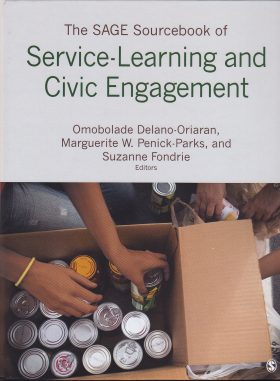The assistant vice president for student life co-authored a chapter on the underside of service-learning for the SAGE Sourcebook on Service-Learning and Civic Engagement

The chapter reports on research and the experiences and understanding of undergraduate students (preservice teachers) as they engaged in service-learning associated with their first teacher education course. Grounded in developmental theories, the chapter points out how preservice teachers made sense of their service experiences in ways that the instructor did not anticipate, and in spite of well-designed reflective practices and course assignments.
The research examined how preservice teachers made meaning of their service-learning experiences, how service-learning combined with other course activities, prior experiences, and personal background to influence preservice teachers’ understandings about race and social justice, and how service-learning may have had both positive and negative effects on the development of knowledge, skills, and attitudes about race and social justice for preservice teachers from racially and socio-economically privileged groups.
Dooley and Burant present four case studies that illustrate how students: (a) primarily turned to prior experiences, values, and personal attributes and characteristics rather than course content as their foundations for sense-making; (b) consistently relied on a host of other people in their lives to actively reflect on their experiences; and (c) centered their attention and summarized the meaning of their experience via unexpected and often dramatic incidents that occurred, interestingly, outside of their actual sites and apart from the duties they performed in service. It is important to note that many of these factors are outside the control of the course instructor, raising critical questions for how service-learning is utilized and implemented as a pedagogy to assist students with particular learning goals, especially related to attitudes toward complex issues of race and social justice.
Through their eyes and with their voices, the students’ service-learning stories provide an ecological view of their experiences and contribute to the understanding of service-learning as it is experienced and understood by a student participant, sometimes in ways that are not anticipated by the instructor and that may run counter to the desired learning objectives.
The students’ experiences indicate researchers still have much to learn about implementing service-learning that consistently leads to personal transformation and deeper commitment to social justice.
Although Dooley and Burant said they remain enthusiastic about the potential of service-learning, as this study illustrates, they caution that getting under the surface of students’ experiences requires consistent attention and effort and may also result in occasional uncomfortable intimacy, as well as doubt and uncertainty about what is actually being learned.


